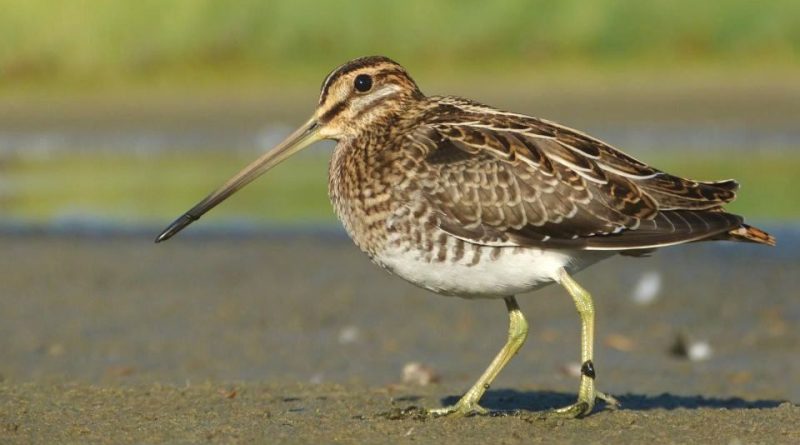Gallinago gallinago
Gallinago gallinago
The Common Snipe (Gallinago gallinago Linnaeus, 1758) is a bird belonging to the Scolopacidae family.
Systematic –
From a systematic point of view, it belongs to the Eukaryota Domain, Regno Animalia, Phylum Chordata, Subphylum Vertebrata, Superclass Tetrapoda, Aves Class, Neornithes Subclass, Charadriiformes Order, Scolopacidae Family and therefore to the Genus Gallinago and to the Species G. gallinago.
Two subspecies are recognized:
– G. g. faeroensis;
– G. g. gallinago.
Geographical Distribution and Habitat –
The Common Snipe is a bird present all over the world except in Oceania.
It nests throughout the European continent with the exclusion of the Mediterranean basin. In Italy it is rarely nesting, except in some marshy environments.
Its habitat during migration and wintering is mainly represented by swamps, wet meadows, grasslands and rice fields; in any case, the main wintering areas are located in northern and equatorial Africa.
Description –
Gallinago gallinago is a medium-sized bird that reaches an average length of 26-28 cm, with a wingspan of 44-49 cm and a weight of 170-250 grams.
The plumage is variegated with brown, reddish and cream hues. Adults are indistinguishable from each other and young people are also very similar to adults.
The head has a cream color with two large dark stripes that start from the beak and pass over the eyes up to the neck. Another brown streak starts from the beak and reaches the nape of the neck and finally two other less mentioned are under the eyes.
The chest is cream-colored with thick brown speckles that fade towards the white abdomen and the sides are white with evident black bars.
The wings have a brown color at the top with a white border on the back in the half close to the body, while at the bottom they assume a uniformly gray color.
The beak is gray-green and fades to black towards the tip. The legs are long and greenish.
Biology –
The Common Snipe is a monogamous species that builds the nest between the grass and the rushes, sometimes between the heather, in depressions of the soil, well hidden, where the female lays 3-4 eggs that are hatched for a period of about 20 days . After hatching, the chicks will be ready to leave the nest and are able to fly after 15 days.
However, both parents take care of the chicks.
Characteristic is the wedding parade during which it emits a song similar to a U-U-U-U, while when it is in flight you can hear gnec-gnec.
Ecological role –
The Gallinago gallinago is a predominantly solitary species although it is possible to observe it in small scattered clusters of few individuals especially during migrations.
It is a bird that is difficult to identify when it is placed on the water near the marsh vegetation, aided by its remarkable mimicry.
It is easier to observe it when it is suddenly disturbed and flies by emitting the characteristic lines with a “zigzag” flight and then rests at a certain distance.
The feeding of this bird is represented by crustaceans, worms, insects and vegetables; to do this, it uses its long and sensitive beak with which it probes the muddy and soft ground to recognize and capture its small prey.
Currently this species has a large distribution area, which is estimated at over 10,000,000 km², with an estimated population of 5,400,000 – 7,500,000 individuals. Based on the criteria of the IUCN Red List it is considered low risk (LC).
Guido Bissanti
Sources
– Wikipedia, the free encyclopedia.
– C. Battisti, D. Taffon, F. Giucca, 2008. Atlas of nesting birds, Gangemi Editore, Rome.
– L. Svensson, K. Mullarney, D. Zetterstrom, 1999. Guide to birds of Europe, North Africa and the Near East, Harper Collins Editore, United Kingdom.


